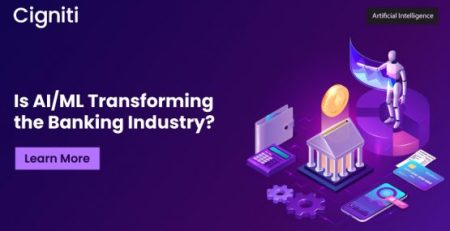Enhancing Customer Service with Generative AI in Core Banking Systems
|
Listen on the go!
|
Customer services now constitute one of the key distinguishing factors of banks in an ever-changing environment. With increasing customer requirements, banks must adopt and incorporate novel technological methods to provide customized services. A very promising technology in this regard is generative AI. Generative AI in core banking systems will enable banks to transform their customer services by increasing efficiencies and building meaningful customer relationships.
Understanding Generative AI in Core Banking
Generative AI, a technology capable of producing new data based on historical patterns, is essential to unlocking a new era of personalized banking services. Generative AI will also investigate customer data, transaction history, and behavioral traits to provide recommendations in the core banking system. Banks can offer custom solutions based on their understanding of customers’ needs.
Enhanced Customer Engagement
Applying Generative AI in core banking systems provides more opportunities for involving customer experiences. Using customer insights to personalize banking solutions is possible through AI-enabled technology, which helps the bank provide relevant services at the opportune moment based on identifying consumer preferences, financial objectives, and important personal milestones. For example, when a customer’s past transactions show the intention of renovating his/her home, the bank can anticipate such and extend offers regarding renovation loans and home insurance deals, improving customer satisfaction and the relationship.
Intelligent Chatbots and Virtual Assistants
In the era of modern technology, many banks have deployed support bots, namely chatbots and virtual assistants. Generative AI takes these AI assistants to the next level, enabling them to understand user queries better and provide more intelligent responses. This advancement empowers customer service representatives to handle routine inquiries more efficiently, from account management to personalized consultations.
Fraud Detection and Prevention
Generative AI could potentially prevent fraud in a bank’s core system. This ensures that general AI models deployed for any reason are ever vigilant for any anomaly or red flag related to suspected fraudulent activities. This will help in averting damages to other people’s goods, and the bank loss will also be avoided alongside reputational cost avoidance.
Predictive Analytics for Customer Insights
The adoption of generative AI facilitates predictive analytics, allowing banks to forecast future customer actions. Banks gain insights into customer needs and preferences through algorithms analyzing historical data and trends. This positions banks to develop unique investment proposals and specialized services, demonstrating a forward-thinking approach driven by data-driven innovation.
Risk Assessment and Compliance
Generative AI is crucial in risk assessment and compliance within the banking sector. Banks can identify potential hazards by analyzing vast amounts of data and ensuring adherence to regulatory requirements. Automated compliance solutions powered by generative AI enhance risk governance mechanisms, enabling banks to detect suspicious activities and promptly respond to regulation breaches.
Innovative Product Development
It is the catalyst of innovation for banking. Given hints on customers’ needs and preferences, generative AI drives innovation. AI can also anticipate current market trends and customer behaviors that inform them on what new product ideas should be brought aboard or modify existing provisions. If banks keep innovating and introducing new products that satisfy customers’ requirements, they will be prepared to remain relevant in the market despite tough competition. This is not just any other innovation – it is an innovation-driven by the data itself.
Challenges and Considerations
While the integration of generative AI promises significant benefits for the banking sector, it comes with challenges and considerations that require careful management.
Data Privacy remains a critical concern as banks strive to balance utilizing customer data for personalized services and ensuring the robust protection of sensitive information. Implementing robust encryption protocols, enforcing stringent access controls, and adopting ethical data usage policies are crucial to establishing and maintaining customer trust.
Security is a paramount challenge, given the increased risk of potential breaches associated with generative AI adoption. Safeguarding against unauthorized access, data breaches, and cyber threats demands a proactive, multi-layered security infrastructure. Regular investments in advanced cybersecurity measures, coupled with frequent vulnerability assessments, are imperative to fortify defenses and ensure the integrity of customer data.
Maintaining Transparency in AI operations is vital for building trust with customers and regulatory bodies. Clear communication about the use of AI algorithms, the sources of data relied upon, and the decision-making processes involved fosters openness and customer confidence.
Ethical Considerations pose a significant challenge as banks navigate the deployment of generative AI. Striking a balance between leveraging AI for customer benefit and avoiding potential misuse requires a thoughtful and ethical framework. Establishing clear guidelines for the responsible use of AI, incorporating ethical considerations into decision-making processes, and regularly reassessing AI strategies are essential steps in addressing this challenge.
Regulatory Compliance is an ongoing hurdle that banks must navigate as they integrate generative AI into their core systems. Adhering to data protection regulations, financial industry standards, and emerging AI-specific regulations necessitates a proactive approach. Staying informed about evolving legal frameworks, engaging in regular compliance audits, and adapting policies are crucial to ensuring seamless alignment with regulatory requirements.
Collaboration with Regulatory Authorities becomes imperative to address the challenges posed by generative AI. Engaging in an ongoing dialogue with regulators ensures that banks remain aligned with the evolving regulatory landscape. This proactive collaboration facilitates the development of industry-wide standards and guidelines, promoting a harmonized approach to generative AI adoption while addressing regulatory concerns.
Continuous Monitoring and Adaptation are essential in the face of technology’s rapid evolution. Regular evaluation of AI model performance and incorporation of feedback loops allow banks to refine their systems. This iterative process enhances the effectiveness of AI applications and positions banks to swiftly address emerging challenges and seize new opportunities in the ever-changing landscape.
Conclusion
Incorporating generative AI into core banking systems can revolutionize customer service, providing a seamless and personalized experience. With a commitment to innovation and compliance, banks can leverage generative AI to stay ahead in a rapidly evolving financial landscape, delivering reliable and innovative financial services that meet the diverse needs of their customers.
With extensive domain expertise and a deep understanding of industry regulations, Cigniti offers various solutions, including ISO20022 Migration, Analytics digital lending, Open banking assurance as per BIAN standards, and end-to-end testing of Core Banking platforms as well as Generative AI applications, thus enabling Banks and Financial Institutions to deliver reliable and innovative financial services.
Need help? Contact our AI/ML and Banking experts to learn more about ensuring customer service with Generative AI in core banking systems.





Leave a Reply